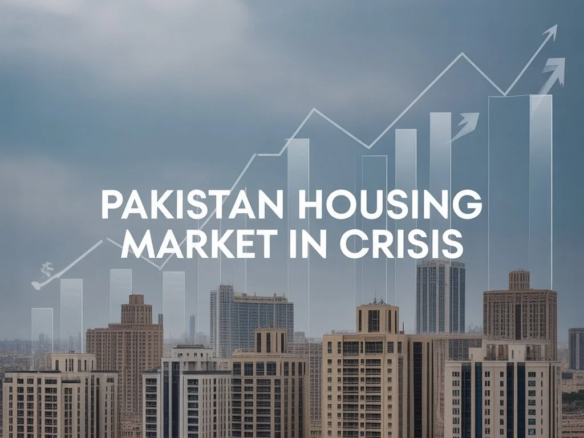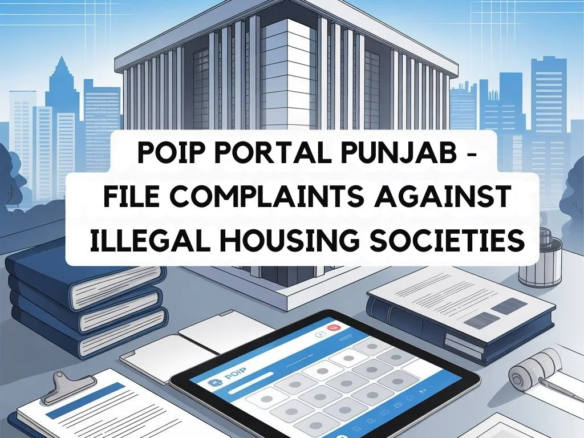In a groundbreaking step towards uplifting low-income families and promoting homeownership in Punjab, Chief Minister Maryam Nawaz Sharif launched the Maryam Nawaz Home Loan Scheme 2025. This initiative part of the broader Apni Chhat Apna Ghar project is designed to empower families with limited financial means by offering interest-free housing loans. The scheme aims to help thousands of citizens construct their own homes ensuring a secure future and improved living standards.
The Vision Behind the Scheme
Punjab’s first female chief minister, Maryam Nawaz, has emphasized people centric governance from the outset. One of her key priorities has been to resolve the long-standing issue of housing shortages for the underprivileged. For years, the dream of owning a home has remained unattainable for many Pakistani families due to financial constraints, lack of affordable housing, and high-interest rates on bank loans. The Maryam Nawaz Home Loan Scheme 2025 is a response to this critical gap, offering a fair and supportive path to homeownership.
By providing interest-free loans to eligible individuals, this scheme embodies the government’s commitment to inclusive development, economic stability, and human dignity. It is not just about building houses it’s about building lives, families, and communities.
Key Features of the Loan Scheme
The most appealing feature of this scheme is its interest-free nature, which means borrowers only repay the principal amount in easy monthly installments. This distinguishes it from traditional banking loans, which burden the poor with compounding interest.
Here are some notable highlights of the scheme:
- Loan Amount: Each eligible applicant can receive up to PKR 1.5 million (15 lakh) for house construction.
- Repayment Tenure: The loan is repayable in monthly installments over 7 years.
- Grace Period: A 3-month grace period is provided before repayments begin.
- Eligibility: Only those who do not currently own a house are eligible. Applicants must be permanent residents of Punjab.
- Land Ownership: Applicants must own 5 marla land (urban) or 10 marla (rural) in their name or within their family.
- Income Level: The scheme targets low-income families, typically earning less than PKR 60,000 per month.
- No Interest: There are no markup charges making the loan truly accessible.
This scheme has been crafted in a way that minimizes financial stress and encourages long-term stability for the borrower.
Application Process
Applying for the loan is a simple and transparent process, made possible through digital platforms. The Punjab government has launched an official portal (acag.punjab.gov.pk) where eligible individuals can apply online. The process includes:
- Registration on the official website.
- Filling out personal and financial information.
- Uploading required documents, such as CNIC, land ownership proof, and income certificate.
- Verification process by the concerned authorities.
- Selection through district-wise quotas or balloting in oversubscribed areas.
- Loan disbursement in stages to ensure funds are used for construction.
The Punjab government has also directed district-level officials to assist applicants, ensuring no one is left behind due to digital illiteracy or lack of access.
Social and Economic Impact
The Maryam Nawaz Home Loan Scheme 2025 is more than just a financial tool it is a powerful mechanism for socio-economic upliftment.

Firstly, it provides dignity through ownership. For many low-income families living in rented spaces or informal settlements, owning a house brings stability and a sense of belonging.
Secondly, it stimulates the construction sector, creating employment opportunities for laborers, masons, electricians, plumbers, and small scale suppliers. A boom in housing leads to growth in allied industries such as cement, bricks, steel, and paint boosting the local economy.
Thirdly, this initiative helps reduce urban overcrowding. Many families forced to live in congested urban areas due to lack of affordable housing can now build homes in suburban and rural settings.
Finally, it reduces dependence on exploitative lending sources. Often, poor families turn to informal moneylenders who charge extremely high interest rates, trapping them in cycles of debt. By offering state-backed loans without interest, the scheme protects people from financial exploitation.
Challenges and Government Strategy
No large-scale government scheme is without challenges. Some of the anticipated issues include:
- Risk of misuse of funds
- Delays in verification and disbursement
- Difficulty in follow-up or repayments
To address these, the Punjab government has instituted several safeguards:
- Stage-wise disbursement: Funds are released in tranches based on construction progress.
- Field inspections by government officers to verify the proper use of funds.
- Digital tracking of applications to ensure transparency.
- Dedicated helplines and support centers to resolve applicant issues.
The inclusion of the Punjab Socio-Economic Registry (PSER) also ensures that the truly deserving beneficiaries are prioritized, minimizing favoritism or corruption.
Public Response and Future Prospects
Since the announcement of the scheme in August 2024, there has been an overwhelming response from citizens. As of mid 2025, thousands of applications have been submitted, and loan distribution has already started in selected districts.
Public reactions have been largely positive. Families who have received the loan cheques describe the experience as “life-changing” and express gratitude for a government that listens. Women, in particular, have praised Maryam Nawaz for leading with empathy and vision.
Looking ahead, the Punjab government plans to expand the scheme further. Talks are underway to include larger loan amounts for bigger families, subsidize material costs, and extend the scheme to rented plots or joint families. Partnerships with housing developers and microfinance institutions may also enhance outreach and efficiency.
Conclusion
The Maryam Nawaz Home Loan Scheme 2025 represents a hopeful chapter in the lives of many low-income families. By removing the burden of interest and providing long-term, easy repayment options, it transforms the dream of owning a home into a real possibility.
In a country where the housing crisis affects millions, such initiatives serve as a beacon of change. Through this scheme, Maryam Nawaz has not only fulfilled a promise but also set a precedent for welfare-driven governance.
As the scheme unfolds in the coming months, its success will depend on transparency, accountability, and continuous support from the public and private sectors. If executed well, it has the potential to redefine housing for the underprivileged in Pakistan one home at a time.
Want to know more? Check out CM Maryam Nawaz Launches “Apni Zameen Apna Ghar” Scheme for Under-Privileged Citizens
Like, share and comment: Facebook, Instagram, Youtube and Tiktok





Join The Discussion